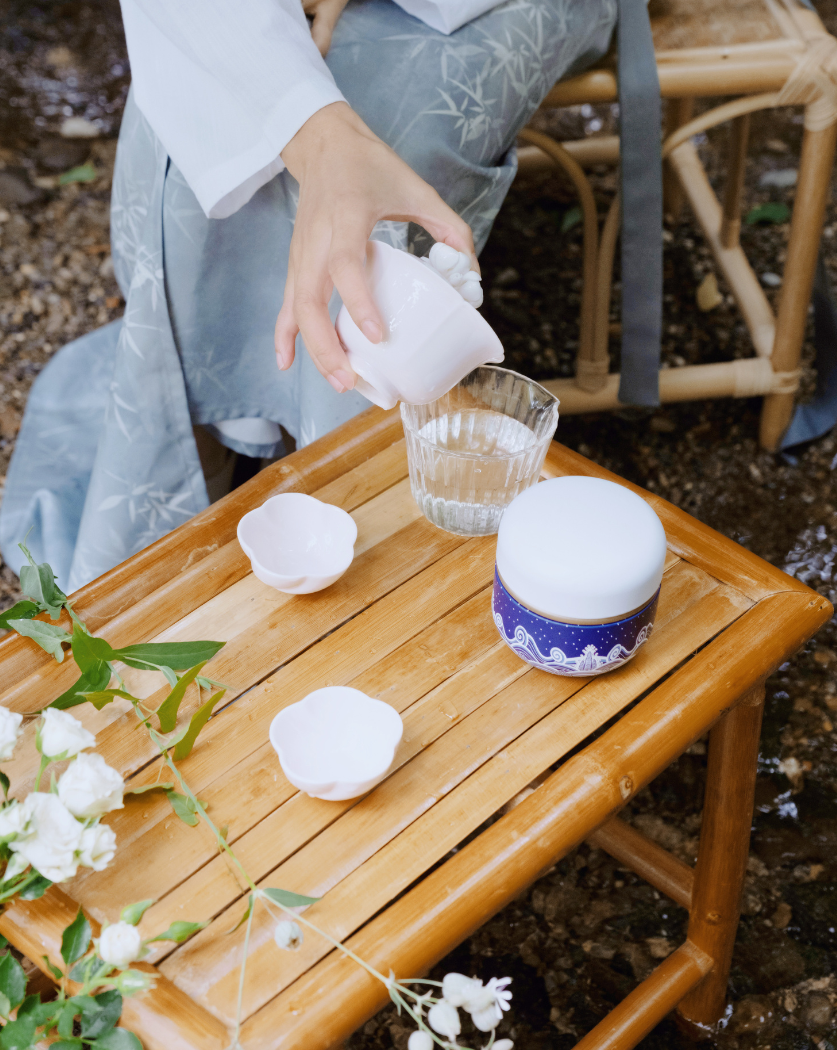The Chinese tea ceremony serves as a bridge for Swiss consumers, inviting them to experience the deeper cultural essence of Chinese cuisine through the beauty and precision of each ceremonial step, enabling a deeper understanding of Chinese food culture and the values embedded in it.
by Susan Wang
The tea ceremony etiquette serves as a cultural bridge to help Swiss consumers better understand Chinese cuisine. Each step in the tea ceremony, such as warming the cups, smelling the aroma and tasting the tea, has a deep cultural and ceremonial connotation behind it. This meticulous and dedicated way of drinking tea allows Swiss tea drinkers to experience the respect and reverence that the Chinese have for their cuisine. By understanding the tea ceremony, Swiss consumers can not only appreciate the beauty of the tea ceremony, but also understand the importance of ‘slow enjoyment’ in Chinese culture, which will undoubtedly make it easier for them to accept and appreciate the essence of Chinese cuisine.

Chinese tea ceremony serves as a bridge for Swiss

Each step has a deep cultural and ceremonial connotation behind it
1. What cultural connections do you see between tea art and Chinese cuisine? What role does tea play in a complete Chinese dining experience?
Chinese tea is more than just a drink; it’s an essential part of Chinese hospitality. In our culture, pairing tea with food aims not only for harmony in taste but also for health and balance. Tea can reduce greasiness, remove strong flavors, and aid digestion, making it a perfect complement to meals. Often served to whet the appetite before a meal and aid digestion afterward, tea also has a role similar to wine, with different teas paired to enhance particular flavors. For instance, light green tea often pairs well with lighter dishes, while Puerh tea, with its aged aroma and digestive benefits, is ideal for richer foods. Tea not only enriches the sensory experience but also fulfills cultural and social functions.
2. How do you usually choose and pair tea with Chinese dim sum or dishes? Are there any specific teas that pair well together?
When pairing tea with Chinese dim sum, we consider the taste and aroma of the tea and how it complements the flavors of the food. For example, lightly fermented oolong or green tea, with its fresh and soft taste, pairs beautifully with lighter dim sum, while more layered teas like black tea or fully fermented oolong suit richer flavors. At Tingyu Teahouse, we carefully select teas that enhance and complement the unique layers and ingredients of each dim sum, achieving a perfect balance of flavors.
3. How do you think promoting tea culture can help increase awareness and appreciation of Chinese cuisine in Switzerland? How receptive are Swiss consumers to tea culture?
Promoting tea culture helps Swiss consumers connect with the essence of Chinese cuisine. Tea is more than a beverage; it embodies Chinese food’s healthy principles and social traditions. Through tea culture, people can learn about pairing tea and food, experiencing the harmony central to Chinese cuisine. In recent years, interest in tea has grown among Swiss consumers, particularly those focused on health and natural lifestyles. Many now substitute some of their daily coffee intake with healthier tea options. At Tingyu Teahouse, we are dedicated to making tea culture accessible and enjoyable for Swiss consumers, fostering their appreciation of Chinese tea.
4. In your experience, can tea ceremony etiquette serve as a cultural bridge to help Swiss consumers better understand and accept Chinese cuisine?
Tea ceremony etiquette can indeed act as a cultural bridge, helping Swiss consumers appreciate Chinese cuisine. Each step of the ceremony, from warming the cup to savoring the tea, is rich in cultural significance. This slow, intentional approach to tea drinking reflects the Chinese respect and reverence for food and encourages tea drinkers to embrace “slow enjoyment.” By understanding tea ceremony etiquette, Swiss consumers can appreciate the beauty of tea art and connect with the deeper cultural values that also permeate Chinese cuisine.
5. Do you have any plans to collaborate with Chinese restaurants to promote a more comprehensive cultural experience combining tea art and cuisine?
In Chinese cuisine, there is a unique dining experience known as the tea banquet, where tea is not just a drink but an ingredient or seasoning that enhances the dishes served. We are excited about collaborating with Chinese restaurants in the future to bring this unique tea banquet experience to Switzerland. This way, European gourmets can gain a richer, more authentic insight into Chinese dining

